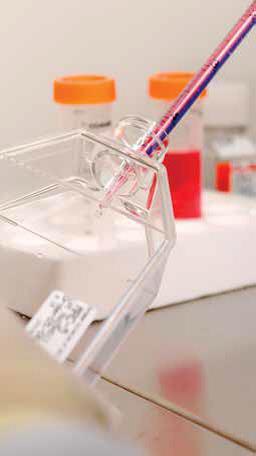HomeMammalian Cell CultureCell Culture Protocol 1: Proper Aseptic Technique and Sterile Handling of Cells
Cell Culture Protocol 1: Proper Aseptic Technique and Sterile Handling of Cells
ECACC Laboratory Handbook 4th Edition

Aim
To ensure all cell culture procedures are performed to a standard that will prevent contamination from bacteria, fungi and mycoplasma and cross contamination with other cell lines.
Equipment
- Personal protective equipment (sterile gloves, laboratory coat, safety visor, overshoes, head cap)
- Microbiological safety cabinet at appropriate containment level
Procedure
- Sanitize the cabinet using 70% alcohol before commencing work.
- Sanitize gloves by spraying them with 70% alcohol and allowing to air dry for 30 seconds before commencing work.
- Put all materials and equipment into the cabinet prior to starting work. Equipment in the cabinet or that which will be taken into the cabinet during cell culture procedures (media bottles, pipette tip boxes, pipette aids) should be wiped with tissue soaked with 70% alcohol prior to use.
- Whilst working do not contaminate gloves by touching anything outside the cabinet (especially face and hair). If gloves become contaminated re-spray with 70% alcohol as above before proceeding.
- Discard gloves after handling contaminated cultures and at the end of all cell culture procedures.
- Movement within and immediately outside the cabinet must not be rapid. Slow movement will allow the air within the cabinet to circulate properly.
- Speech, sneezing and coughing must be directed away from the cabinet so as not to disrupt the airflows.
- After completing work disinfect all equipment and material before removing from the cabinet. Spray the work surfaces inside the cabinet with 70% alcohol and wipe dry with tissue.
- Liquid cell culture waste should be discarded in sodium hypochlorite (10,000 ppm) and must be kept in the cabinet for a minimum of two hours (preferably overnight) prior to discarding to the drain with copious amounts of water.
- Periodically clean the cabinet surfaces with a disinfectant or fumigate the cabinet according to the manufacturer’s instructions. However, you must ensure that it is safe to fumigate your own laboratory environment due to the generation of gaseous formaldehyde, consult your on-site Health and Safety Advisor.
Sign In To Continue
To continue reading please sign in or create an account.
Don't Have An Account?